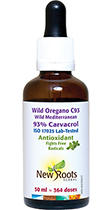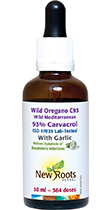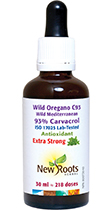Natural Born Killer! A Story of Carvacrol and Biofilm
Animals (including us), plants, insects, mushrooms, yeast, and even lowly bacteria have developed complex defense mechanisms critical for survival. From a porcupine with razor-sharp quills to a poisonous mushroom with lethal toxins, organisms owe their survival to these evolutionary adaptations.
Pathogenic microorganisms, including those from the illness-causing Staphylococcus and Salmonella genuses (categories), have developed their own complex defense mechanisms called “biofilms.” These harmful bacteria produce this protective biofilm by secreting excess DNA, proteins, and polysaccharides to create a gel-like substance that protects them as they adhere to intestinal walls. They can then thrive within this “gated community” at the expense of your health.
Enter carvacrol, the naturally occurring biocidal compound found in the leaves of over 50 species of oregano. In addition to serving an active role in its own survival, carvacrol has been proven to break down proteins which serve as the structural scaffolding for biofilm formation. Once carvacrol penetrates this protective biofilm, it proceeds to break down bacterial cell walls, leading to their death. In fact research published in the Journal of Applied and Environmental Microbiology demonstrates the natural antimicrobial action of carvacrol as being as effective as commercial-grade sanitizing agents for inhibiting biofilm formation of pathogenic bacteria.
Origanum minutiflorum is recognized as the most potent source of naturally occurring carvacrol. This robust and resilient plant grows wild and thrives at altitudes exceeding 1500 m within the barren mountain ranges of the eastern Mediterranean region. Carvacrol is the principal therapeutic compound found in steam-distilled oregano oil.

 Stores
Stores


